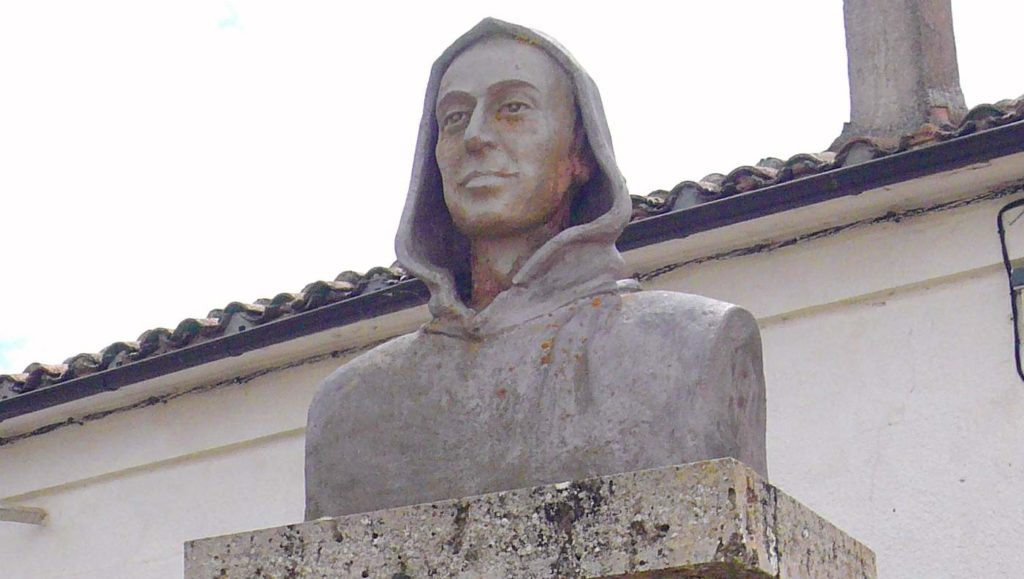Nov. 14 was World Diabetes Day, a day that many in the worldwide medical community focus on a disease that causes about 4 million deaths a year, according to the World Health Organization. The Catholic Church considers St. Rafael Arnáiz Baron to be the patron saint of those suffering from diabetes.
Considered one of the great mystics of the 20th century, Arnáiz could not fulfill his desire to become a Trappist monk because of his diabetes, so he was only allowed to be an oblate.
Born in Burgos in 1911, he was educated in schools of the Society of Jesus in his city of origin and in Oviedo, where his family later moved for work reasons.
As a child, he suffered from various illnesses. At the age of 10, after recovering from pleurisy, his father took him to Zaragoza to offer him to the Virgin of Pilar in gratitude for his cure.
Rafael was admitted to the Madrid School of Architecture in 1930.
Aware of his drawing skills, his uncle Leopoldo Baron Torres, duke of Maqueda, commissioned him to design the cover of a book titled “From the Battlefield to the Trappe.” It was a translation of the story of a French soldier who had achieved fame and honor in the art of arms during the Franco-Prussian War (1870–1871).
Although he could have aspired to the highest decorations and positions, the young Rafael decided to join the Trappists. He was impressed by the life of a French soldier named Gabriel Mossier, who ended his days as Brother Gabriel, a member of the Cistercian Order of the Strict Observance.
Rafael made his first visit to the Cistercian Monastery of San Isidro de Dueñas in Palencia shortly afterward. Those were the turbulent years of the 1930s in Spain that led to the Civil War.
After doing his compulsory military service, in 1934, the future saint abandoned his university studies and entered the Palencia monastery as a novice for four months. Because he became seriously ill with diabetes, his superiors sent him home to recuperate.
Almost two years later, in 1936, Arnáiz entered again in San Isidro de Dueñas, no longer as an aspirant to monasticism but as an oblate brother. He remained there until September when he was called to fight with other youth.
Despite Rafael’s determination to fight against the enemies of God and his Church, he returned to the convent two months later after being declared unfit for combat due to his disease.
Already, in 1937, due to the special difficulties of the monastic life during wartime, the superiors decided to send him back to his family. But before the end of the year, Arnáiz returned to the monastery in December.
Barely four months later, on April 26, 1938, Brother Rafael died in his cell at the age of 27. In total, adding up all the stages, he only lived the Trappist rule for about 20 months.
A long process of canonization
As early as the 1940s, some of his brothers, convinced of his heroic virtues, proposed placing his tomb in a wing of the cloister, without success.
In 1944, his uncle, the duke of Maqueda, wrote the history of his nephew, titled “A Secret of the Trappist,” which interested many.
It was not until the 1960s that work began on the beatification process and his tomb was moved to the cloister, as his brothers had wished 20 years earlier.
During World Youth Day held in Santiago de Compostela in August 1989, Pope John Paul II proposed Brother Rafael as a model to follow. A few days later, he was declared “Venerable.”
Only a year later, a possible miracle began to be studied and in 1992, St. John Paul II proclaimed him “Blessed” in St. Peter’s Square in Rome.
Under Pope Benedict XVI, the miracle for the canonization of Rafael Arnáiz was approved, and he was canonized on Oct. 11, 2009.
Two years later, he was declared patron — together with other saints like the then-Blessed John Paul II — of World Youth Day in Madrid.

